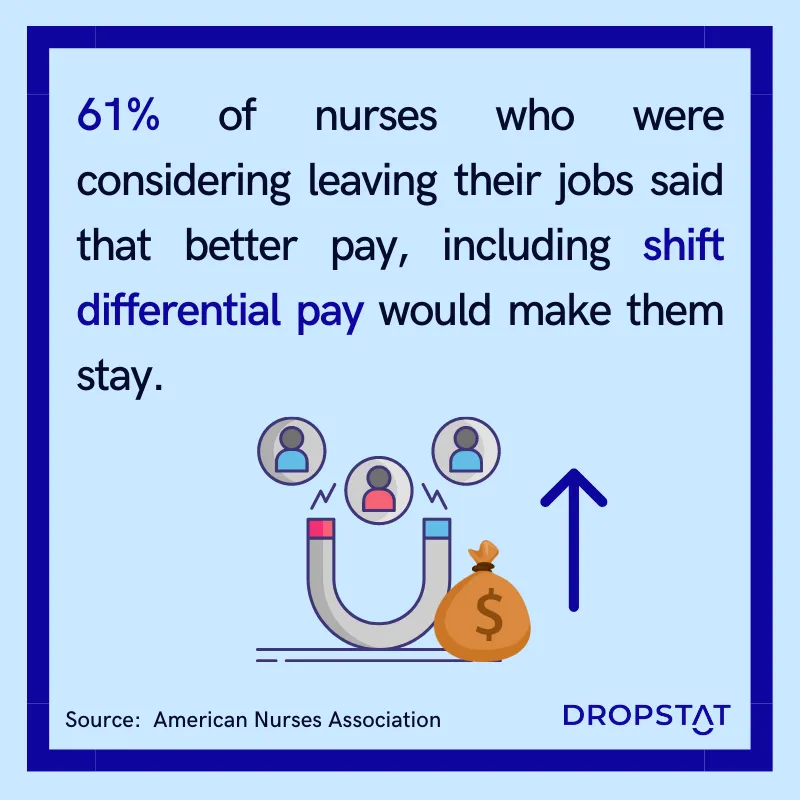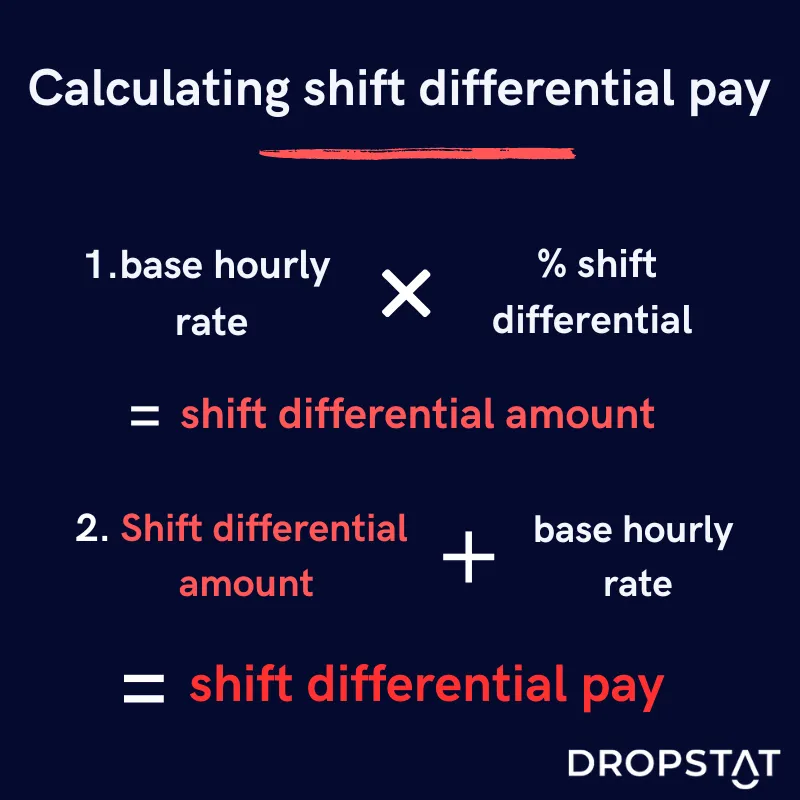The widespread shortage of nurses, alongside the need for continuous coverage for all shifts within healthcare, creates a unique need for odd working hours. Often, shift differentials are used for a graveyard shift, night shift, or holiday shift. This additional compensation ultimately allows your facility to guarantee safer staffing environments across different disciplines and departments.
However, shift differentials are not solely used for undesirable shifts. Some departments that would benefit from specialists can use differentials as a tool to provide incentives that generate greater retention and department efficiency.
Benefits of shift differential pay
Offering a shift differential increases your institution’s efficiency in numerous ways, such as:
- improves employee retention
- ensures safe staffing and the ability to fill all shifts
- reduces added pressures on administrators and schedulers
Differential pay improves employee retention
When nurses who work undesirable shifts are compensated for their willingness to work those times, employees are more likely to feel adequately valued and appreciated. Typically, employers decide the differential pay amount, which encourages more nurses to willingly take on the shift, increasing their feelings of dedication to the institution.
Within healthcare, in particular, employers calculate shift differentials in different ways based on various factors such as hours of the day, holidays, discipline, and previously worked shifts. However, the ability to offer shift differentials provides facilities with greater chances of avoiding burnout and high turnover rates.

Night shift differential pay ensures safe staffing
Facilities that are paying shift differentials for night shifts are less likely to experience unsafe staffing. If your facility offers differential pay, your staff will be more inclined to take on the shifts that are less desirable, which reduces the prevalence of understaffing. When schedulers and administrators struggle to find employees that can work non-ideal hours, they are forced to use agency or overtime staff to guarantee safe staffing.
The facility often ends up paying more when resorting to these staffing methods, and there is a bigger threat to patient safety as well. Nonetheless, when companies pay shift differentials, unsafe staffing is mitigated due to the added financial incentive to work during shifts that are not ideal or at inconvenient times.
Shift differential pay reduces administrative pressure
Schedulers and administrators often do not have insight into employees’ preferences for shifts, which makes it more challenging to create assigned shifts that align with the schedules that nurses prefer. Paying differentials motivates employees to fill shifts before schedulers are forced to seek out staff to fill the gaps. This practice grants administrators greater assurance and structure when attempting to ensure safe staffing ratios for all shifts and departments.
Ultimately, this assurance will contribute to higher rates of employee satisfaction which also works to decrease the rates of turnover within your facility. When healthcare leaders prioritize implementing innovative practices to reduce facility inefficiency, their staff can more easily avoid wasted time and resources.
How to calculate shift differentials
Many employers use a percentage of the hourly pay to calculate the shift differential. For example, if a nurse’s hourly rate is $50 per hour, and your facility offers a 15% differential pay, the nurse would expect to earn $57.5 per hour. So for the entire shift, the nurse will earn $690 for a 12-hour shift, including the differential pay, as opposed to $600.

Shift differential pay vs. Overtime
While shift differential pay is additional compensation for an entire shift, overtime typically includes a minimum of 1.5X the employee’s hourly rate for the additional hours worked past the typical 40-hour workweek. While overtime pay is used for employees who work more than the standard workweek, shift differentials can be applied to shifts that staff take on within normal work hours (40-hour workweek) that happen to be undesirable hours, such as a graveyard shift. Federal law also requires shift differentials to be included when calculating overtime.
Unlike other benefits, shift differentials offer employees more immediate compensation for their readiness to work unwanted hours.
Dropstat’s competitive pay and cost transparency
Dropstat’s platform uses a comprehensive analytics system to track bonuses offered for different disciplines and shifts. This ability enables facilities to determine where their spending is being allocated and whether or not their bonuses are excessive. Similarly, Dropstat’s built-in shift rate tracking allows facilities to determine their spending for each discipline and to make more informed staffing decisions accordingly.
This cost transparency lends itself to improved retention rates by offering more competitive pay through shift differentials and competitive salaries. Given Dropstat’s ability to collect facility data for the purpose of analyzing shift rates, bonuses, and overtime, the platform assists with suggesting the implementation of a shift differential pay policy. Ultimately, this will work to improve internal retention as well as safe staffing ratios throughout your facility’s departments.







